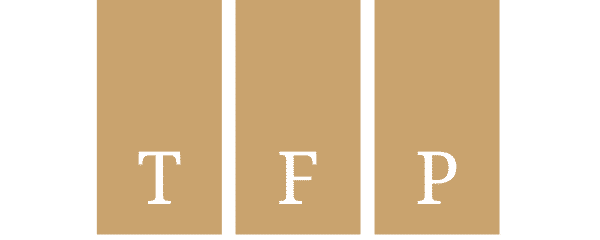10 Low-Cost Index Funds For Investing in 2023
Are you an investor who wants investing to be as easy and low-cost as possible? Here’s an ideal solution: low cost index funds.
An index fund is a passively-managed fund that tracks a particular index, such as the Standard and Poor’s 500 (S&P 500), which means they seek to track the performance of the underlying index rather than trying to outperform it.
Index funds have become progressively popular in recent years as investors have grown tired of paying high fees for managed funds that have failed to deliver superior returns. In addition, many index funds with low expense ratios are offered, making them an attractive option for cost-conscious investors.
10 Best Low-Cost Index Funds
Index funds offer several advantages over other investments, including lower expenses and greater diversification. And since they’re passively managed, they require less time and effort to maintain.
There are dozens of low-cost index funds available, but these are 10 of our favorites:
1. iShares Core S&P 500 ETF (IVV)
Investing in the S&P 500 is made easy with IVV, which has an expense ratio of just 0.03%, making it a low-cost option. The annual costs come to about $3 for a $10,000 investment, which is cost-effective compared to actively managed funds, which can charge up to 1%.
Due to its daily solid volume and assets under management (AUM), IVV can be easily bought and sold on most brokerage platforms.
When you’re currently invested with Vanguard, compare IVV to VOO – Vanguard’s S&P 500 fund, to see which fits your situation best.
2. iShares Core S&P Total US Stock Market ETF (ITOT)
More than 3,000 mid-and small-cap stocks outside the S&P 500 are worth investing in. Although these equities are more volatile, they might offer marginally better long-term returns.
You can purchase ITOT, which tracks the S&P Total US Stock Market Index, to invest in the whole stock market. ITOT holds a total of 3,617 equities, with almost 82% of them being large-cap names.
The ETF performs similarly to IVV, and the two work well together for tax-loss harvesting (deliberately taking a capital loss to offset taxes). The expense ratio for ITOT is 0.03%.
3. SPDR S&P 500 ETF Trust (SPY)
SPY is one of the biggest and most well-known S&P 500 funds. With over $370 billion assets under management and an average daily trading volume of over 50 million shares.
Because of its enormous volumes, SPY is a favorite among retail and institutional traders. Traders who desire the best order fills frequently choose SPY over IVV. Thus, SPY might be a better choice if you’re seeking a trading instrument.
The ETF’s higher expense ratio of 0.09% makes it less suited for long-term holding, although it is still inexpensive compared to several actively managed funds.
When you want to invest in the S&P 500 at a lower cost, consider analyzing SPY vs VOO to see which fits your situation best.
4. Invesco NASDAQ 100 ETF (QQQM)
QQQM is a market capitalization index with 101 of the largest non-financial sector stocks trading on the Nasdaq Stock Exchange. The Nasdaq 100 is more volatile than the S&P 500, meaning that it has higher risk and the potential for higher returns.
It is the best option if you want more exposure to companies like Meta Platforms, Apple, Amazon, Netflix, and Alphabet.
QQQM is the “mini” form of Invesco’s well-known QQQ fund. QQQM has a lesser volume and assets under management than QQQ but a lower expense ratio of 0.15%, compared to 0.2% for QQQ.
5. iShares Core US Aggregate Bond ETF (AGG)
AGG consists of investment-grade corporate bonds of all maturities and Treasury securities of the United States government. AGG represents the entire US bond market.
Passive investors frequently hold bond ETFs like AGG to limit volatility and drawdowns during periods when the market is volatile. It offers a balanced combination of protection, yield, and interest rate sensitivity as an intermediate-duration bond ETF. The expense ratio for the ETF is 0.03%.
6. iShares US Treasury Bond ETF (GOVT)
Corporate bonds’ increased default risk and stronger link with the stock market may turn off some investors. Also, they lose value in conjunction with stock market movements. As a result, some investors might prefer treasuries, which are government-issued bonds backed by the United States.
GOVT, which tracks the ICE (Intercontinental Exchange) US Treasury Core Bond Index, is a wonderful option for purchasing the treasury market. This index consists of a ladder of treasury bonds with AAA credit ratings and maturities ranging from one to 30 years.
While GOVT may offer more robust protection in a crash than AGG, it has a lower yield to maturity than AGG or the rate of return, assuming an investor retains it to its maturity date. In addition, the expense ratio for the ETF is 0.05%.
7. Vanguard FTSE Developed Markets ETF (VEA)
VEA is a fund that seeks to track the performance of the FTSE (Financial Times Stock Exchange) Developed Markets Index, a benchmark index for developed market stocks. The fund comprises large and mid-capitalization stocks from developed countries, including the United States, Canada, Japan, and Germany.
VEA has a low expense ratio of 0.05% and currently has over $62 billion in assets under management. The fund is well diversified across sectors and geography, making it a compelling option for investors looking for broad exposure to developed markets.
Additionally, VEA’s dividend yield of 2.72% is significantly higher than the yields on developed market bonds, making it an attractive income-generating investment.
8. Vanguard Total International Stock ETF (VXUS)
Combining VEA’s developed market fund and Vanguard FTSE Emerging Markets (VWO) fund in various ratios allows investors to index entire portfolios of international stocks. This method, however, necessitates manual balance and the inconvenience of determining how much of each to hold.
For a hands-off approach, investors can purchase VXUS, which tracks the FTSE Global All Cap ex-U.S. Index and holds 7,896 equities from developed and emerging markets.
Currently, VXUS is around 25% VWO and 75% VEA. Vanguard automatically rebalances assets at regular intervals and modifies the fund’s allocations depending on changes in the weightings of the world’s stock markets over time. The expense ratio for the fund is 0.07%.
9. Vanguard Total World Stock ETF (VT)
The FTSE Global All Cap Index is followed by VT. 9,435 large, mid, and small-cap stocks from established and emerging markets worldwide are included in this one-ticker solution.
The fund presently has a 60/40 US to non-U.S. split, but Vanguard will adjust this when the makeup of the global stock market changes. It is the most passive kind of stock investment with an expense ratio of 0.07%.
10. Schwab US Broad Market (SCHB)
Schwab U.S. Broad Market is a fund that seeks to track the Dow Jones US Total Stock Market Index. The fund invests in all the stocks in the index in proportion to their weightings.
The index includes 2,500 publicly traded companies in the United States, including small, mid, and large-cap companies. Schwab U.S. Broad Market is one of the largest ETFs by assets and is one of the most popular ETFs among investors.
SCHB charges an expense ratio of 0.03%, which is lower than many other funds.
What Are the Different Indexes?
Have you ever wondered how the different stock indexes are calculated? Whether you’re a seasoned investor or just starting, it’s essential to understand the difference between the various indexes. Here are a few of the most popular indexes:
Dow Jones Industrial Average (DJIA)
The Dow Jones is one of the world’s oldest and best-known stock indexes. It contains 30 large publicly traded companies, including household names like Coca-Cola and Boeing. The Dow Jones is a “price-weighted” index, meaning that stocks with higher prices have a greater impact on the index.
Standard & Poor’s 500 Index (S&P 500)
S&P 500 is a broader market index that contains 500 large publicly traded companies. The S&P 500 is a “market-weighted” index, meaning that each company’s weight is proportional to its market value. As a result, it makes the S&P 500 a more accurate representation of the overall stock market.
Nasdaq Composite Index (NASDAQ)
An index of over 3,000 publicly traded companies listed on the Nasdaq Stock Exchange, the NASDAQ is heavily weighted towards technology stocks, making it a good barometer for the tech sector’s health. Like the S&P 500, it is a market-weighted index.
How to Invest in Low-cost Index Funds?
Index fund investing is simple. Here’s a basic breakdown of the procedure:
Set Goals
Index fund investing is an excellent way to let your money grow slowly over time. By picking index funds that match the markets you want for yourself, such as stock or bond indexes, investors can invest in fewer but better investments without taking on too much risk and still get their return on investment quickly.
Research Your Potential Indexes
Many investment options are available to you, but you only need a few. Most investors should stick with the broad stock market index to not be too concentrated on any specific sector or country’s economy.
You could always add more exposure by investing in other markets like emerging ones if desired (or allocate fewer funds towards bonds).
Research Index Funds
After deciding whatever index you’re interested in, It’s time to choose which relevant index fund to purchase. Again, the cost is often the deciding factor here. Also, consider the returns, reviews, and other information while making your choice.
Decide on the Buying Platform
There are two main ways to purchase low-cost index funds: directly from a mutual fund company or through a brokerage. Buying directly from a mutual fund company is often the simplest option, as you can usually set up an account and make purchases online.
However, brokerages may offer more choices and lower fees. ETFs are similar to mutual funds, but they trade like stocks throughout the day, meaning you can buy and sell them at any time, although you will usually pay a commission.
Buy Index Funds
You’ll need to use an investment account to buy shares of an index fund. First, you can use an investment account, such as a Roth IRA or a conventional brokerage account. Then, choose a certain dollar amount to spend or a specific number of shares when buying the fund.
Essential in building your wealth over time is to make sure you make regular contributions. Even $25 per month can have an incredible impact over the long term. Many ask how to invest and make money daily; the answer is to start small and go from there.
Best Low-Cost Index Funds To Buy
One of the most successful investors of all time, Warren Buffet, recommends investing in index funds as long-term investments. And why not? A low-cost index fund offers many advantages, like higher diversification and keeping more money in your pocket instead of paying high management fees.
With this list of low-cost index funds, you can understand and explore your options for the best investment.
This article originally appeared on Savoteur.







